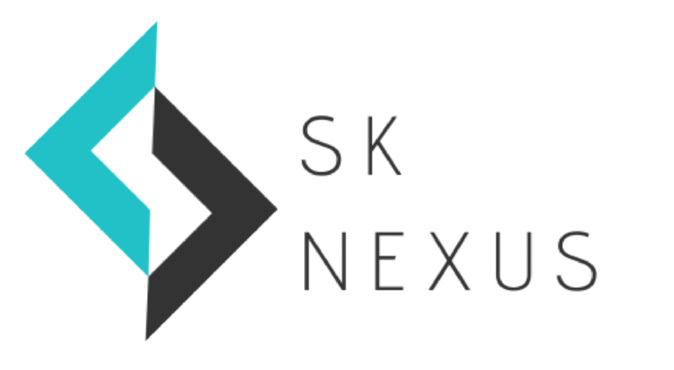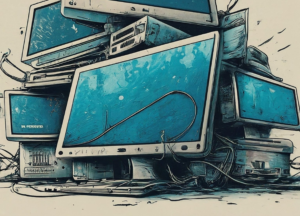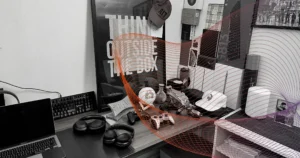These days all conversations are revolving around the term Metaverse.
And like most recent innovations, it’s become a buzzword.
Let’s agree that talking about the idea of a virtual world makes a person look smart.
Remember the movie matrix? Well, most conversations end there.
But to take this conversation further and apart from the mainstream discussion let’s dive in a little deeper to understand what the main proposition is.
Coined by the author Neal Stephenson – the term Metaverse was used in his 1992 science fiction novel “Snow Crash”.
I haven’t read the book, but from what I’ve researched Neal had beautifully put words together to depict a scene of a virtual universe with 3D buildings, virtual environments, used lifelike avatars as the characters and built a story around this.
And let me take this opportunity to add, everything predicted or depicted about the future eventually becomes our unusual reality.
I mean let’s not go too far, but remember how the movie Contagion predicted the advent of Covid-19?
I’ll leave this conversation here for now.
Back to Metaverse, Facebook caused quite a stir when it changed its name to Meta and launched a rather unimpressive video where Mark Zuckerberg attempts to demonstrate what Metaverse will appear like.
And now we have Microsoft staking claims.
But what is this Metaverse everyone’s so hyped about? And when will we get to experience it?
What is the Metaverse?
Simply put it’s the “new age of communication”.
A product of multiple elements of innovative technology, like virtual reality, mixed reality, augmented reality.
These technologies create a digital universe for humans to connect, interact and engage with friends, family, colleagues, clients, etc.
Some of the commonly used examples can be virtually attending concerts, meetings, conferences and even taking virtual trips across the world.
And we’re not bizarre to think that this is just a far-fetched thought.
The internet of today serves as the main entry point for billions globally, providing them valuable information and services.
It allows us to communicate through hundreds if not thousands of channels, enables instant and effective socialising opportunities, and provides us with unlimited self-entertainment venues.
So much so that it acts as a single most powerful medium to start and even scale businesses. This means users are able to build, trade and invest in products, goods and services.
But as soon as we bring up virtual spaces and ecosystems, things will take an unusual turn.
In the virtual world, transactions may solely rely on the digital currency (crypto) and traded items may be in the form of non-fungible tokens (NFTs) making them a foundation for value creation.
NFTs value proposition could help accelerate the use of XR ecosystems, as places people go to combine elements of the digital economy with their offline lives.
Keeping all this in mind, Metaverse will enhance this experience on a scale that might make it harder for us when distinguishing between being offline and online.
Struggle for VR Dominance: Meta Vs Microsoft
Meta (Previously Facebook, Formerly The Facebook)
There is no denying that this tech giant had already made news of venturing into the world of virtual reality when it acquired Oculus in 2014.
And since then it hasn’t stopped the hustle.
In 2018 TechCrunch reported that Meta’s patent application for AR glasses was discovered by reporters at Business Insider – these glasses used a “waveguide display with two-dimensional scanner” as a way to display media onto the lenses.
So it’s clear that from the very start Zuckerberg has his eyes and mind on something bigger than just a social media site.
Many believe like his earlier stunts, this too would become the next big thing because the young founder is famous for his “Complete Dominance” claims at the company’s internal meetings.
But contrary to the popular belief Meta has also seen its fair share of failures. From its unsuccessful quest to buy Snapchat to internal ventures failures.
Meta is regarded as an industry leader when it comes to social software but not many have heard of its failures such as Building 8, which was envisioned as a support enterprise while venturing into the hardware world.
Building 8 as many wouldn’t know was Facebook’s first move towards getting into the hardware game.
Hardware development is tough and especially tough to turn into a business success given the various stakeholders in the game.
Building 8 was turned into Portal in 2018 after it miserably failed after just two and a half years of its inception.
The only product that was launched under its umbrella was a video-calling device, which neither gained any traction nor was able to survive in a highly competitive market.
After several revamps the device still exists and offers a number of features including enabling users to use Messenger rooms, for large-scale calls of up to 50 people.
Why did I mention this?
Because Zuckerberg has constantly been working to transition all existing products and domains into the VR and AR spectrum.
Like in 2018 the Messenger platform enabled businesses to incorporate augmented reality into their Messenger experiences by leveraging the camera effects platform.
A step closer to his dream of bringing the virtual and physical worlds together – in this case enhancing the online shopping experience by embedding branded AR camera effects into a business’ bot.
To your surprise brands like Sephora, Nike, ASUS and KIA joined the movement and were present during the launch.
All these initiatives are a way for Meta to become a step closer to bringing about a virtual world where users can connect and engage for work, entertainment, education and travel using VR headsets.
A place where digital avatars will exist instead of humans making the internet- in the words of the man himself; “A more immersive and embodied internet”.
Now let’s shift to the next giant – Microsoft.
Microsoft (formerly also Microsoft)
Microsoft made headlines when it unveiled its plans concerning the future of Metaverse soon after Facebook changed its name to Meta.
This caught many by surprise – with many believing this move to be just a “jumping on the bandwagon” trend.
Not realising that Microsoft has been on the same mission since it launched the first version of HoloLens in 2015.
Hololens is a high-end, standalone AR (augmented reality) device.
The initial version of Hololens was considered to be revolutionary as it introduced holograms after Microsoft developed its very own custom silicon.
The “Holographic Processing Unit” which powered the device, enabled users to project holograms by positioning them on to real-world objects.
Since then the company has made strides to further improve and develop this technology.
Some of the use cases of the new features enable back-office workers to provide remote assistance to workers on-site, letting users stream 3D graphics from the cloud, etc.
And Microsoft’s approach in regards to bringing out such technology has been successful because of its sheer simplicity.
Instead of putting all its efforts into developing and manufacturing from scratch, Microsoft presented the opportunity as well as the conditions for already existing hardware vendors to build upon their devices so long as they do it in Microsoft’s world.
The most common example is the platform of Windows Holographic that includes everything from basic VR to advanced AR which can be run on any hardware device, leveraging Microsoft’s APIs as well as access to Xbox Live services.
Microsoft has diversified its efforts in the world of AR to bring about more collaborative work with private businesses, healthcare, entertainment, education as well as NASA.
With respect to VR, the shift is tilted more towards consumer-focused projects.
Unlike Facebook, Microsoft is more focused on making the virtual world accessible via any device be it a laptop with a single microphone or its own range of HoloLens headsets that on the other hand consists of 16 cameras and six microphones.
Microsoft Teams is another domain that the company focuses on integrating with mixed reality (MR) technology and extended reality (XR) applications; Mesh for Teams.
Leveraging its existing 250 million users spread worldwide – Microsoft Teams will recreate the meeting experience by offering virtual spaces in 2022.
Much of the development has already begun where the idea is to build upon already existing features present on Microsoft Teams such as “Together mode” and “Presenter mode.
Companies will be able to make use of cartoon avatars depicting their own unique personalities, facial expressions all done in real-time.
Imagine meetings and conferences all being powered by mixed-reality applications including holograms and virtual avatars (CRAZY).
The tech giant has already successfully built a virtual workplace environment for the Fortune 500 company: Accenture.
Even the U.S. Army is seeking help from Microsoft to develop an augmented reality Hololens 2 headset for them to train.
Indeed exciting time to love what is going around – especially when you learn about the paradigm shift technology is about to make.
It only makes us (the users) curious as to how and what the future with this sort of hi-tech lifestyle would feel like.
Of course from the viewpoint of these tech corporations, there’s much to be done and achieved.
Which has led to an ongoing war with tech giants acquiring startups and companies working in the AR, VR, XR and MR spaces.
Meta (previously Facebook) acquired Oculus, Apple went on to acquire AR hardware developers like Akonia Holographics and Vrvana, Microsoft further developed HoloLens and as for Google…. Well lets just hope they get some success after the failure of Google Glass.
The gaming industry too isn’t too far off with online game universes such as Fortnite, Minecraft and Roblox have already made successful future plans and are set to become a part of the evolution of the Metaverse.
As these Metaverse initiatives mature, grow and expand, end-users should prepare themselves for a hyper-real alternative world to coexist in.
For a more in-depth discussion about the Metaverse do give a listen to the pilot episode of our Podcast – Tech Made Fun below:
SK NEXUS is on a mission to make knowledge more accessible – around tech, around career, around business. There’s a severe gap for actionable knowledge around us – we are on a mission to fill that need.
Your contribution today can help us create more valuable content for many years to come. You can always pitch in by clicking the below.
Your continued support has supported 100+ high quality pieces of valuable content so far.
Experienced and energetic marketing specialist with over 7 years of experience – Khayyam loves to share his thoughts on startups, disruptive innovation, and whatever piques his interest.





